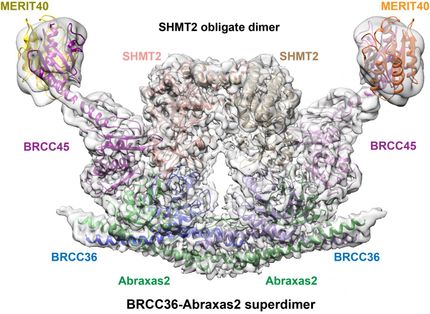Scientists solve breast and ovarian cancer genetic mystery
Francis Crick Institute scientists, funded by Cancer Research UK, have solved a decades-old mystery and helped to unravel the genetic cause of some breast and ovarian cancers, according to new research published in Cell.
Following a five-year study in nematode worms, researchers have uncovered how key proteins can switch on a protein called RAD51, allowing it to repair cancer-causing DNA damage in cells.
Women with faulty RAD51 and BRCA1 and BRCA2 genes are at higher risk of developing breast and ovarian cancer. Scientists already knew how proteins produced by these genes work hand-in-hand to fix DNA damage, and why faults can lead to disease. Defects in protein cousins of RAD51 also increase the risk of these cancers. But scientists didn't know how. The team has now revealed how these protein cousins work to switch on RAD51 by changing its shape - which dramatically boosts its DNA-repair powers.
Dr Simon Boulton, lead author and group leader at the Francis Crick Institute, said: "These protein cousins - known as paralogs - have been an enigma for about 30 years. But now we know they are right at the heart of repairing cell damage and helping to stop breast and ovarian cancers developing. In fact they have as vital a role as the more well-known BRCA genes in preventing the disease.
"Knowing how these proteins work won't make an immediate difference to cancer patients, but it's another piece of the cancer jigsaw puzzle which could lead to more effective and kinder treatments in the future."
Original publication
Other news from the department science

Get the life science industry in your inbox
By submitting this form you agree that LUMITOS AG will send you the newsletter(s) selected above by email. Your data will not be passed on to third parties. Your data will be stored and processed in accordance with our data protection regulations. LUMITOS may contact you by email for the purpose of advertising or market and opinion surveys. You can revoke your consent at any time without giving reasons to LUMITOS AG, Ernst-Augustin-Str. 2, 12489 Berlin, Germany or by e-mail at revoke@lumitos.com with effect for the future. In addition, each email contains a link to unsubscribe from the corresponding newsletter.





















































